Columbia Investigation Focuses on Problems At
NASA
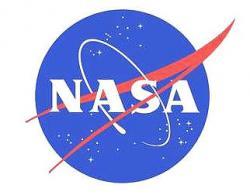 The investigation into what caused the tragic
demise of the Space Shuttle Columbia plods along, with one
member of the board feeling a touch of deja vu. Dr. Sally Ride,
America's first woman in space, was a member of the
Challenger investigation board in 1986. Now, she's on the
board investigating Columbia's destruction as it
re-entered the atmosphere on Feb. 1.
The investigation into what caused the tragic
demise of the Space Shuttle Columbia plods along, with one
member of the board feeling a touch of deja vu. Dr. Sally Ride,
America's first woman in space, was a member of the
Challenger investigation board in 1986. Now, she's on the
board investigating Columbia's destruction as it
re-entered the atmosphere on Feb. 1.
Ride said she's hearing what sounds a lot like what she heard 17
years ago: Serious problems with a particular component or
components, repeatedly weathered by various shuttle missions, might
have catastrophically failed because management misread the threats
as maintenance headaches.
Is There An Echo In Here?
In 1986 it was leaky O-rings on solid fuel booster rockets; this
time, it seemed, debris — perhaps the shuttle's own foam
insulation — might have dealt the craft a fatal blow.
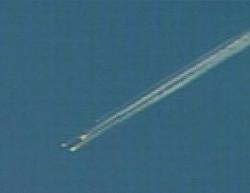 Another authority who drew similar parallels was Prof. Diane
Vaughan of Boston College, whose scholarly review of the 1986
disaster in her book, "The Challenger Launch Decision:
Risky Technology, Culture and Deviance at NASA," earned her a
platform as an expert witness in the Columbia case.
Professor Vaughan, a sociologist who is to testify this month, said
in an interview that the similarities became obvious to her in
early February, in reports that mentioned longstanding problems
with falling foam and the shuttles' fragile insulating tiles.
Another authority who drew similar parallels was Prof. Diane
Vaughan of Boston College, whose scholarly review of the 1986
disaster in her book, "The Challenger Launch Decision:
Risky Technology, Culture and Deviance at NASA," earned her a
platform as an expert witness in the Columbia case.
Professor Vaughan, a sociologist who is to testify this month, said
in an interview that the similarities became obvious to her in
early February, in reports that mentioned longstanding problems
with falling foam and the shuttles' fragile insulating tiles.
She then watched NASA officials like the Columbia
program manager, Ron D. Dittemore, explain at news conferences that
the National Aeronautics and Space Administration had decided the
occasional damage from dislodged foam and other liftoff debris was
a risk NASA had grown comfortable with. To Professor Vaughan, Mr.
Dittemore's assessment seemed evidence of something all too
familiar: NASA management's "incremental descent into poor
judgment."
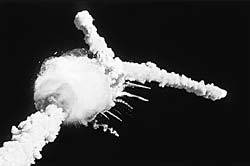 Dr. Vaughn said she did not think that in either
accident people had necessarily done their jobs improperly or had
violated NASA procedures. Instead, Ms. Vaughan said she saw a
flawed culture in which most participants gradually demoted their
concerns, causing major problems to be pushed off as lower-level
issues.
Dr. Vaughn said she did not think that in either
accident people had necessarily done their jobs improperly or had
violated NASA procedures. Instead, Ms. Vaughan said she saw a
flawed culture in which most participants gradually demoted their
concerns, causing major problems to be pushed off as lower-level
issues.
As she wrote of Challenger workers in her book:
"Following rules, doing their jobs, they made a mistake. With all
procedural systems for risk assessment in place, they made a
disastrous decision."
Vaughan maintains the true error resided in the system. Once
officials in the rocket booster program, including Lawrence Mulloy,
the project leader, left NASA, the problem was treated as
solved.
But Was It?
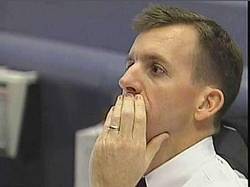 "That need to make individuals accountable can
backfire, because once individuals are shifted out of their
positions and the personnel are changed, it looks as if all of the
problems have been cleared up," Professor Vaughan said. "That means
that the organizational problems that shaped their decision making
go unchecked."
"That need to make individuals accountable can
backfire, because once individuals are shifted out of their
positions and the personnel are changed, it looks as if all of the
problems have been cleared up," Professor Vaughan said. "That means
that the organizational problems that shaped their decision making
go unchecked."
In NASA's case, she said, one such problem is budgetary. In her
opinion the agency does not have enough money to do its job over
the long run without cutting corners.
"You have to look beyond individuals and look to the situation
in which they work," Professor Vaughan added. "Otherwise you're
just going to reproduce the problem. And that's what's happened
— again."
Mulloy: "Challenger Scapegoat"
Mulloy, who has retired, says he was made a scapegoat. "That was
their primary focus in 1986, to find somebody to put the public
face on for blame," he said, "and I was the lucky nominee for
that."
Whatever the physical cause of the Columbia accident is
determined to be, it is clear that the space agency's decision
making culture has become as important to the board as any falling
foam or data recorder.
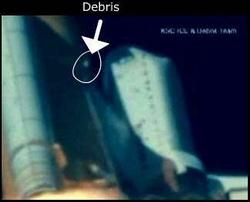 "We need to have the aperture of our focus opened
up to see things the way she sees them," Adm. Harold W. Gehman Jr.,
chairman of the investigation board, said this week of Professor
Vaughan.
"We need to have the aperture of our focus opened
up to see things the way she sees them," Adm. Harold W. Gehman Jr.,
chairman of the investigation board, said this week of Professor
Vaughan.
At the hearings this week, the admiral sounded a lot like her.
"We have not concluded that the analysis and the decision making
was wrong," Admiral Gehman said. "They may have done everything
they could with the information that they had available. They may
have had all the right people in the room, and asked all the right
questions, and considered all the right factors, and just come up
with the wrong answer."
After the hearings, he explained why the board was taking this
approach. "We have to have a better working theory than hindsight,"
he said. The no-fault approach bothers some at NASA, who say they
think determining responsibility for mistakes is important.
Professor Vaughan agrees that individual responsibility is
important. But she draws a distinction between assigning
responsibility and scapegoating, which she maintains does not fix
the deeper problem. "You change the cast of characters, and you
don't change the organizational context," she said. "And the new
person can be under the same constraints and conditions that they
were under before."
The board is still gathering and reviewing debris and data,
digesting the discoveries it has made about NASA's responses to the
blow from the foam chunk that occurred about 80 seconds into the
Columbia's flight.
Software Misused?
The board has discovered that the software used by Boeing, a
NASA contractor, to evaluate the damage had never been used during
a mission before and was not designed as a predictive tool. In
fact, it was little more than an Excel spreadsheet that described
past strikes and damage.
Professor Vaughan, looking at the chain of events now, said that
the seemingly hard numbers of the Boeing analysis appeared at the
time to trump the gut feelings of the engineers. Admiral Gehman has
said the board probably will not write its final report until June.
But its charter, written by NASA, calls only for recommendations to
improve safety and return to flight — in other words,
prevention, not punishment.
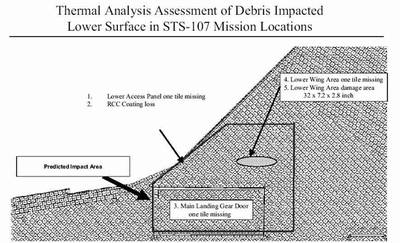
That is the standard model for aviation and military "mishap
investigations," like the one after the terrorist attack on the
destroyer Cole in Yemen in October 2000. That inquiry was also
conducted by Admiral Gehman.
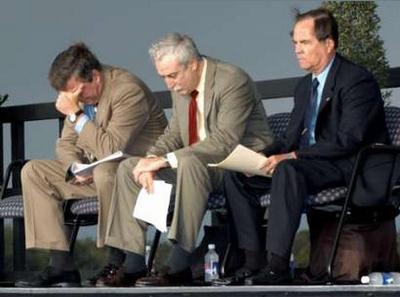
But it remains to be seen whether this approach can break what
Mulloy, for one, fears may be a pattern at NASA.
"The mistake in judgment we all made was accepting deviance in
the performance from the hardware from what it was designed to do,"
Mr. Mulloy said of events before the Challenger disaster.
Once the erosion in O-rings was tested and analyzed and accepted,
"we started down the road to the inevitable accident.
"If — and this is a big if, with big capital letters in
red — if the cause of the Columbia accident is the
acceptance of debris falling off the tank in ascent, and impacting
on the orbiter, and causing damage to the tiles — if that
turns out to be the cause of the accident, then the lesson we
learned in Challenger is forgotten, if it was ever
learned."
 Aero-News: Quote of the Day (10.27.25)
Aero-News: Quote of the Day (10.27.25) ANN's Daily Aero-Linx (10.27.25)
ANN's Daily Aero-Linx (10.27.25) NTSB Prelim: Lancair 320
NTSB Prelim: Lancair 320 Airborne Programming Continues Serving SportAv With 'Airborne-Affordable Flyers'
Airborne Programming Continues Serving SportAv With 'Airborne-Affordable Flyers' Airborne-Flight Training 10.23.25: PanAm Back?, Spirit Cuts, Affordable Expo
Airborne-Flight Training 10.23.25: PanAm Back?, Spirit Cuts, Affordable Expo









